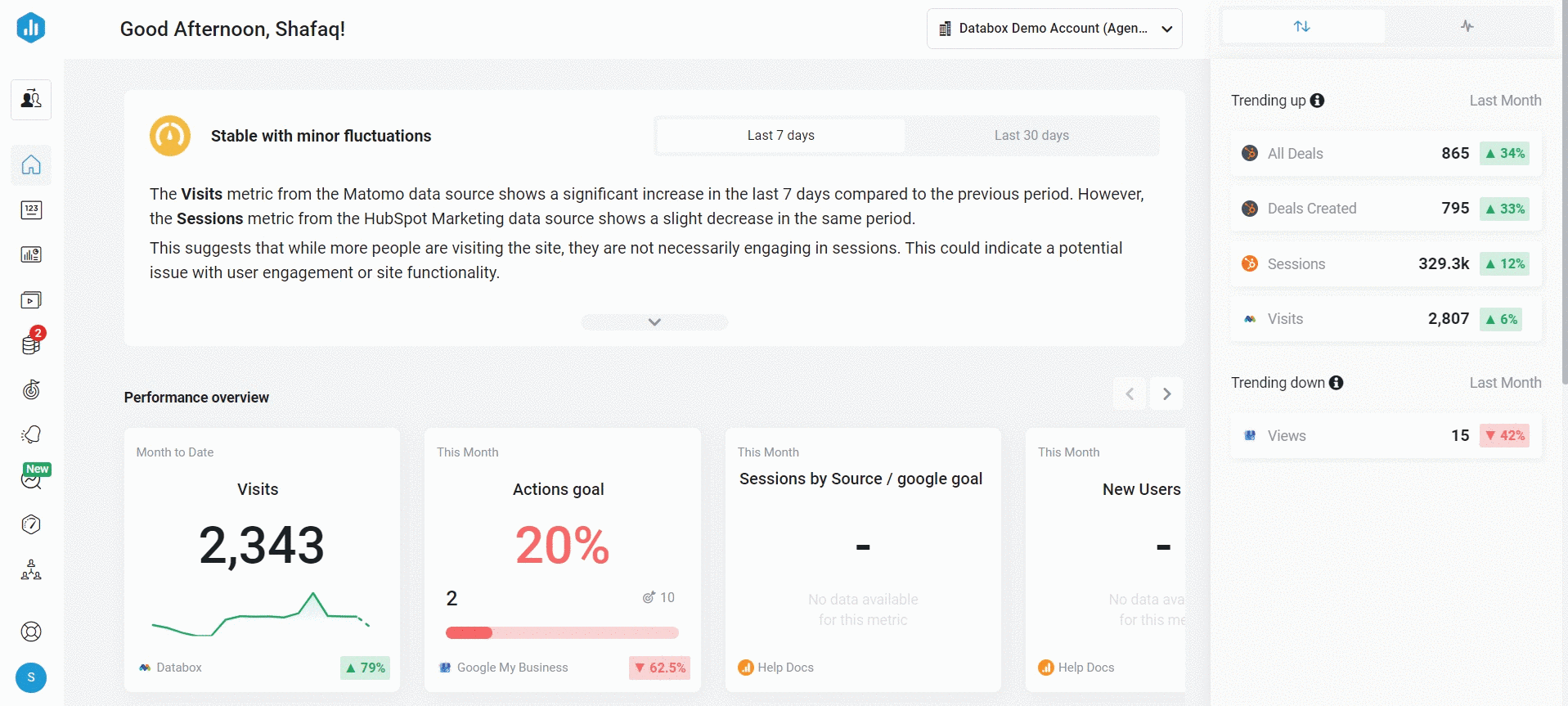HOW TO
How to connect Wix eCommerce to Databox
IN THIS SECTION
- How to connect Wix eCommerceto Databox
- What’s the maximum amount of historical data initially available when you use a new Wix eCommerce Metric in Databox?
- What time zone does Wix eCommerce data sync in?
- How often does Wix eCommerce data sync?
How to connect Wix eCommerce to Databox

To connect a Wix eCommerce Account in Databox, go to Data Manager > + New connection. Type Wix eCommerce in the search bar and click on the green Connect button. Next, click the green Connect now button.
This will open the Authorization window, which is where you will be prompted to enter your Wix eCommerce login credentials and authorize the Databox app.
Pro Tip: Each Wix eCommerce Account must be connected as a separate Data Source in Databox (1 Account = 1 Data Source). Learn more here.
What's the maximum amount of historical data initially available when you use a new Wix Data Source Metric in Databox?
Pro Tip: In order to start syncing data for a Metric, you can add it to your Metrics screen, use it in a Scorecard, set a Goal around it, create an Alert for it, or add it to a Databoard. Learn more here.
The amount of historical data you're able to access in Databox is dependent on your Databox plan. Learn more here.
What time zone does Wix eCommerce data sync in?
Wix eCommerce data is synced in the time zone set in the Wix eCommerce Account. For example, if your Wix eCommerce Account time zone is set as EST, your Wix eCommerce data will sync with Databox in EST.
How often does Wix eCommerce data sync?
All Wix eCommerce Data Sources will sync every hour with Databox. Learn more here.
How to build a Databoard using Wix eCommerce data
- Navigate to Databoards > + New Databoard > Start Blank
-
Click on the Metric Library icon on the left-hand side of the Designer.
-
Select the appropriate Wix eCommerce Account from the Data Source drop-down list in the Metric Library.
-
View the list of pre-built Wix eCommerce Datablocks in the Metric Library. Drag and drop your selected Datablock onto your Databoard.
- If a pre-built Datablock isn't available for your use case, navigate to the Visualization Types above the Metric Library
- View the list of Visualizations available in Databox. Click on the Visualization or drag and drop the selected Datablock to your Databoard.
-
Click on the Datablock on the Databoard to open the corresponding Datablock Editor on the right-hand side of the Designer.
-
In the Metrics drop-down, click Data Source to select the appropriate Data Source. This will filter out metrics from the specific Data Source.
-
In the main Metrics drop-down, select the metric you'd like to display on the Datablock, using the Search bar if needed. This will update the Datablock, and it will populate with the corresponding data.
-
Complete steps 4-9 until your Databoard is complete.
Additional Information
IN THIS SECTION
Granularity Restrictions
- Due to API limitations, Hourly granularity is not supported. This may affect visualization options for Charts in Databox.
- Only current metrics such as “Product Quantities by Name” and “Products” support “All time” granularity